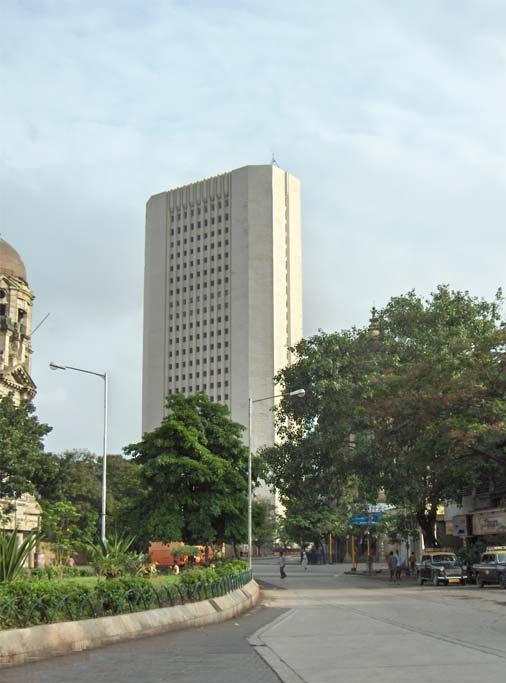RBI (Reserve Bank of India)
| Headquarters | Mumbai, Maharashtra |
|---|---|
| Established | 1 April 1935 |
| Governor | Duvvuri Subbarao |
| Currency | Indian rupee |
| ISO 4217 Code | INR |
| Reserves | US$302.1 billion |
| Base borrowing rate | 8.00% |
| Base deposit rate | 6.00% |
- The Reserve Bank of India (RBI) is India's central banking institution, which controls the monetary policy of the Indian rupee. It was established on 1 April 1935 during the British Raj in accordance with the provisions of the Reserve Bank of India Act, 1934. The share capital was divided into shares of 100 each fully paid which was entirely owned by private shareholders in the beginning. Following India's independence in 1947, the RBI was nationalised in the year 1949.
- The bank is also active in promoting financial inclusion policy and is a leading member of the Alliance for Financial Inclusion (AFI).
Structure
Central Board of Directors
- The Central Board of Directors is the main committee of the central bank. The Government of India appoints the directors for a four-year term. The Board consists of a governor, four deputy governors, fifteen directors to represent the regional boards, one from the Ministry of Finance and ten other directors from various fields. The Government nominated Arvind Mayaram, as a director of the Central Board of Directors with effect from August 7, 2012 and vice R Gopalan, RBI said in a statement on August 8, 2012.
Governors
- The current Governor of RBI is Duvvuri Subbarao. The RBI extended the period of the present governor up to 2013. There are four deputy governors, Deputy Governor K C Chakrabarty, Urjit Patel, Shri Anand Sinha, and Shri H.R. Khan . Deputy Governor K C Chakrabarty's term has been extended further by 2 years. Subir Gokarn was replaced by Mr. Urjit Patel in january 2013.
Supportive bodies
- The Reserve Bank of India has ten regional representations: North in New Delhi, South in Chennai, East in Kolkata and West in Mumbai. The representations are formed by five members, appointed for four years by the central government and serve—beside the advice of the Central Board of Directors—as a forum for regional banks and to deal with delegated tasks from the central board. The institution has 22 regional offices.
- The Board of Financial Supervision (BFS), formed in November 1994, serves as a CCBD committee to control the financial institutions. It has four members, appointed for two years, and takes measures to strength the role of statutory auditors in the financial sector, external monitoring and internal controlling systems.
- The Tarapore committee was set up by the Reserve Bank of India under the chairmanship of former RBI deputy governor S. S. Tarapore to "lay the road map" to capital account convertibility. The five-member committee recommended a three-year time frame for complete convertibility by 1999–2000.
- On 1 July 2007, in an attempt to enhance the quality of customer service and strengthen the grievance redressal mechanism, the Reserve Bank of India created a new customer service department.
Offices and branches
- The Reserve Bank of India has 4 zonal offices. (Chennai, Delhi, kolkata, Hyderabad)
- It has 19 regional offices at most state capitals and at a few major cities in India. Few of them are located in Ahmedabad, Bangalore, Bhopal,Bhubaneswar, Chandigarh, Chennai, Delhi, Guwahati, Hyderabad, Jaipur, Jammu, Kanpur, Kolkata, Lucknow, Mumbai, Nagpur, Patna, and Thiruvananthapuram. Besides it has 09 sub-offices at Agartala, Dehradun, Gangtok, Kochi, Panaji, Raipur, Ranchi, Shillong, Shimla and Srinagar.
- The bank has also two training colleges for its officers, viz. Reserve Bank Staff College at Chennai and College of Agricultural Banking at Pune. There are also four Zonal Training Centres at Mumbai, Chennai, Kolkata and New Delhi.
"LIKE" us on Facebook


No comments:
Post a Comment